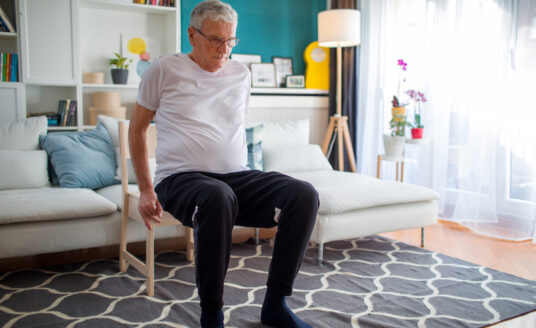Some people believe that pain and stiffness, decreasing flexibility and diminished mobility are part of the aging process. After all, what can seniors do about getting older?
Turns out, a lot, especially if rehabilitation and therapy can assist in addressing these issues. Let’s look at three questions:
What Can Rehabilitation Do?
Prevent falls. Falls are the most common cause of injuries among senior adults. A physical therapist can improve strength, stability, walking gait, and balance during the recovery period after a fall.
Lessen pain. The pain of arthritis, osteoporosis, or joint replacement surgery can be alleviated by physical therapy, and there are techniques to reduce the pain caused by cancer. Reducing the need for pain medications may make the therapy cost-effective in the long run.
Restore an active lifestyle. For more seniors, rehabilitative activities increase their fitness levels and lets them enjoy more independence for a longer period of time. Rehabilitation to improve function after a stroke, and helping people with dementia maintain their ability to move are also available.
Restore the ability to perform daily activities. Occupational therapists focus on the things seniors do every day in their home: bathing, cooking, dressing, or doing the laundry, etc. Through these activities, the therapist helps improve the senior’s motor skills, strength, dexterity, and range of motion.
Improve speech after a stroke or head injury. Speech therapists teach seniors how to regain the ability to speak, using vocal exercises so that they can communicate effectively again. They also help seniors who have difficulty swallowing.
These are just a few ways rehabilitation services can aid seniors, and many of them can be provided in the home. Consult with a physician, a rehabilitation professional or a geriatric care manager to learn more details about what is possible.
What Are the Benefits of In-Home Rehabilitation?
Rehabilitation is available in hospitals, outpatient facilities, short-stay rehabilitation centers or in the home.
In-home rehabilitation holds many benefits for seniors:
Convenience. The senior doesn’t have to arrange for transportation to and from therapy sessions. No stress over traffic jams, parking, making it into the facility, and being in an unfamiliar environment with many other people. And if the therapist is delayed, it’s far better waiting in the comfort of your own home than it is in a waiting room chair.
More personalized care. The in-home therapist only has one patient to focus on while providing care in the home. There are no distractions or interruptions for the therapist or the patient. In fact, this one-on-one care has been shown to promote quicker healing, using the home’s unique layout and environment to tailor the therapy.
What Are the Limitations and Costs of In-Home Rehabilitation?
Cost. The in-home cost per-session is usually greater than inpatient or outpatient therapy.
Insurance coverage. Insurance companies are reluctant to pay the additional cost for in-home rehabilitation. Though this seems to be changing, the patient may have to work with his or her doctor to make a case for why in-home therapy is necessary. The inability to travel and the hardship it imposes would be a consideration for coverage.
Limited equipment. Obviously, a therapist cannot transport large pieces of therapy equipment to the home, though advances are creating more portable options.
Other options
If more intense rehabilitation is required, some senior health communities offer options. Aside from its St. Andrews & Bethesda Home Health services that offers in-home rehabilitation, Bethesda has six short-stay Rehab & Therapy Centers around the St. Louis area. The program is covered under Medicare Part A, and provides speech, occupational, and physical therapies. The care is specifically for people who live in their own homes or senior living apartments who may have been recently discharged from a hospital and could benefit from additional rehabilitation before returning home.
And a Bethesda care manager can supply information, options and resources when it comes to rehabilitating your senior loved one.
Learn more about our Rehab & Therapy services under the Care & Services section of our website or contact a care manager today.
Want to find out more?
If you’d like to stay up to date with Bethesda Health Group, sign up here to receive our blog and newsletters!
"*" indicates required fields
Related Articles
Want to find out more?
If you’d like to stay up to date with Bethesda Health Group, sign up here to receive our blog and newsletters!
"*" indicates required fields



